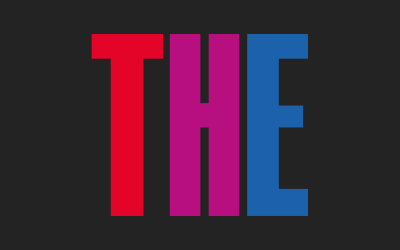Feedback tools
The University requirements for providing student feedback are outlined in the Assessment (Coursework, Tests and Examinations) Policy.
Effective feedback enhances learning, engagement and assessment performance. Feedback should include strengths and weaknesses the learner has demonstrated, and feed forward, i.e.., suggest strategies for improvement in future activities or assessment tasks.

How-to guides
Where appropriate, inform students of opportunities to obtain automated feedback on the quality of their work before they submit.
- Automate feedback on plagiarism through Turnitin. Create a separate ungraded draft assignment in Canvas so students can receive a Turnitin similarity report before they submit their final version for grading.
- Enable the ETS® e-rater® technology in Turnitin for the draft assignment so that students can check the quality of the language before they submit.
- Remind students to use spelling and grammar checker tools such as Grammarly.
Marking rubrics
- Marking rubrics clarify the required elements of an assessment task and can help students review the quality of their assignment before submitting.
- Rubrics supports a more consistent and objective grading scheme.
- Rubrics also provide feedback to students on their performance in each criterion.
- Adding a rubric to an assignment in Canvas can make marking and providing feedback more efficient, especially when grading with rubrics in Canvas’ SpeedGrader.
Providing feedback with marking rubrics
When marking an assignment in Canvas with a rubric that has performance level descriptors:
- The marker can enhance the effectiveness of the feedback by providing further written comments for each criterion and for the assignment overall.
- Overall feedback on a particular submission may be entered more quickly using the speech-to-text function or a short video recording.
- A bank of comments created in an external document (e.g., a Google Doc or Excel spreadsheet) can make providing individual feedback more efficient. (A bank of comments cannot currently be created with this type of rubric in Canvas.)
If adding a rubric that has specific marking criteria but no performance level descriptors or ratings, select the option to write free-form comments. The marker can then create and reuse these comments while marking to provide individual feedback more efficiently.
If marking with a rubric in Turnitin GradeMark, create a comments bank using QuickMarks.
Whole class summary
- A summary of the overall performance of the class on an assignment can reinforce the concepts and skills that students need to demonstrate. It can also encourage students to reflect further on their own performance.
- This could be sent via Canvas Announcements or posted as a short video presentation.
- Canvas Rubrics Analytics provides the average performance level of the whole class in each criterion in the rubric. This may enhance efficiency when summarising feedback, particularly with larger classes.
- A summary from a previous class may also help later cohorts with the same assignment.
Utilising feedback
- Encourage students to make use of suggestions from feedback on past assessments.
- Prompt students to use feedback to help identify specific areas for improvement. Before they submit their next assignment, send a reminder through Canvas Announcements for students to refer to feedback in their past assessments.
- Guidance for students on using feedback is available on the University of Auckland’s Learning Essentials website.
Quizzes
- Create automated feedback when setting up self-marking quizzes (e.g., MCQs, True/ False, Fill in the blank) in Canvas or other quiz authoring tools (e.g., H5P).
- Embedded feedback can include which answer is correct, why a response is right or wrong, suggested strategies to generate a correct response and which specific learning materials to review.
Feedback in practice
Constructive Failure story: The epic success that couldn’t last
We uncover a teacher’s journey to forge deep connections through relational pedagogies—a path marked by both unparalleled success and an unexpected twist.
Fostering critical thinking with reflective journals
Lesley Gardner and Udayangi Muthupoltotage discuss how timely, frequent and constructive feedback has a powerful influence on student achievement. However, its impact on higher education students is hotly debated and often highly variable.
Stats and cats: Herding numbers in large classrooms
Step into Anna Fergusson’s classroom, where STATS 220: Data Technologies is more than just a course – it’s an adventure in data science.
Using peer review in a large class to improve writing skills
Improve student writing by teaching students how to assess a piece of written work and introducing a peer review element to their essay.
Developing students’ judgement of their own work through self-assessment and feedback
Self-paced and self-directed tasks for self-assessment/formative feedback (MUS103 and MUS130).
Developing students’ judgement of their own work by comparing it to that of others
Piata Allen’s Te Reo Māori Pronunciation Online course includes a range of activities for self-assessment.
Using video feedback to increase student engagement
Recording your feedback to students as video or audio can be time-efficient and more personalised, and students report paying more attention to it than written comments.
See also
Feedback and feed forward
Providing ongoing opportunities for formative feedback to develop students’ judgement and self-regulation.
Page updated 17/07/2023 (added feedback in practice)







